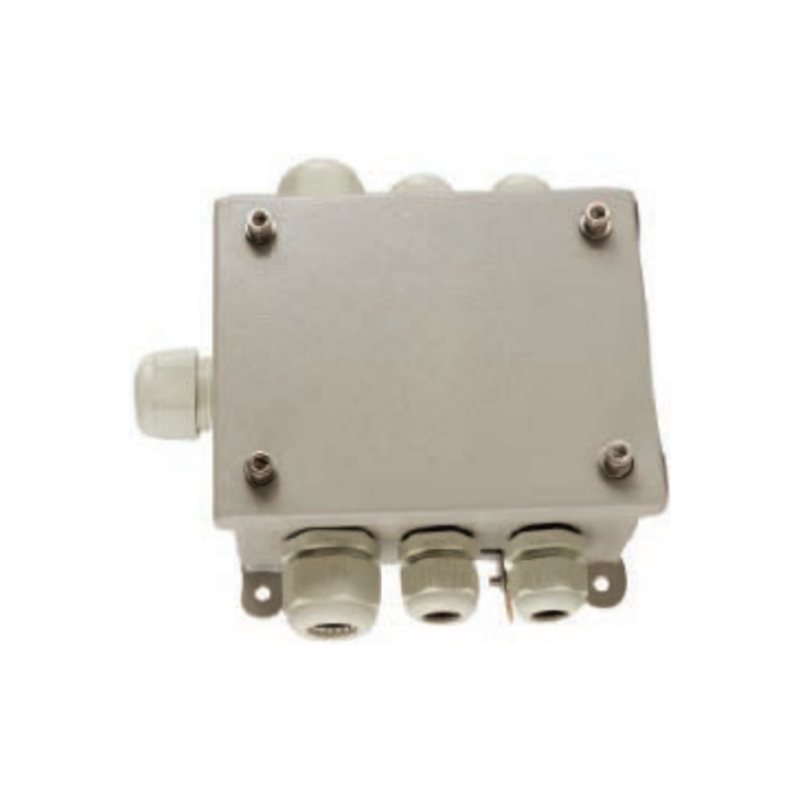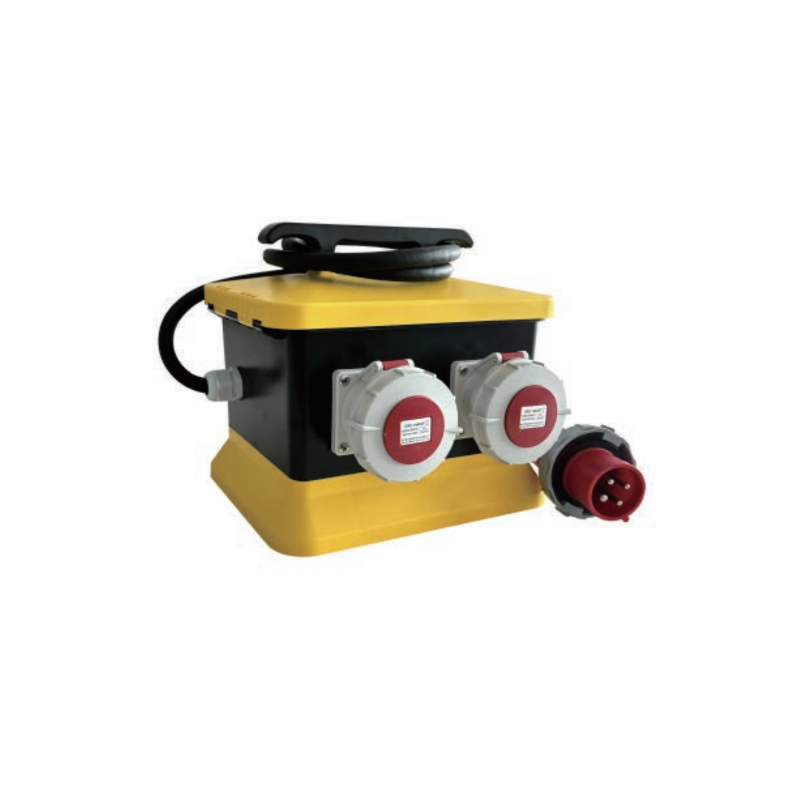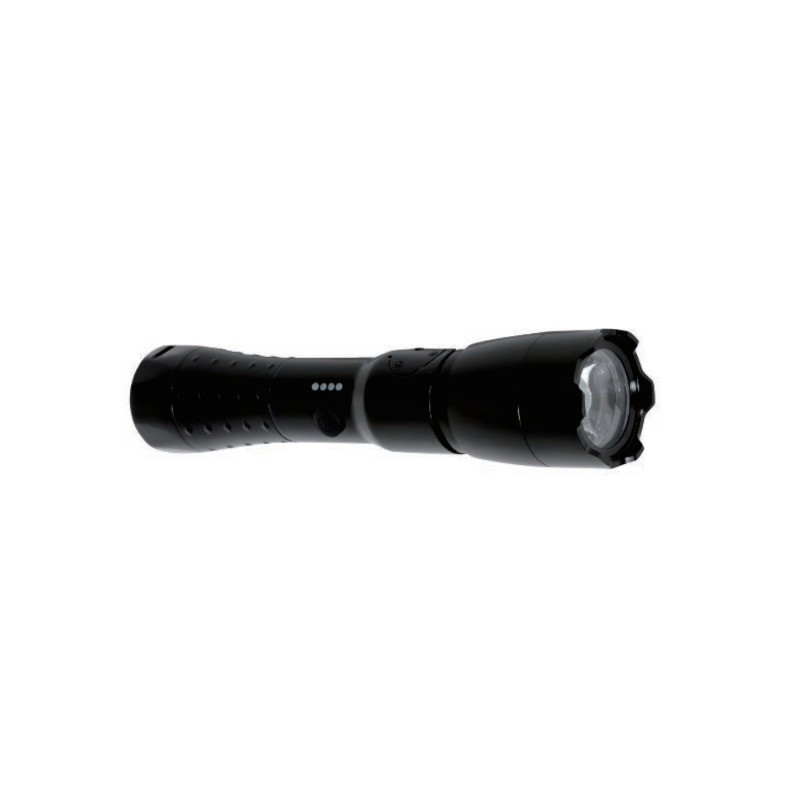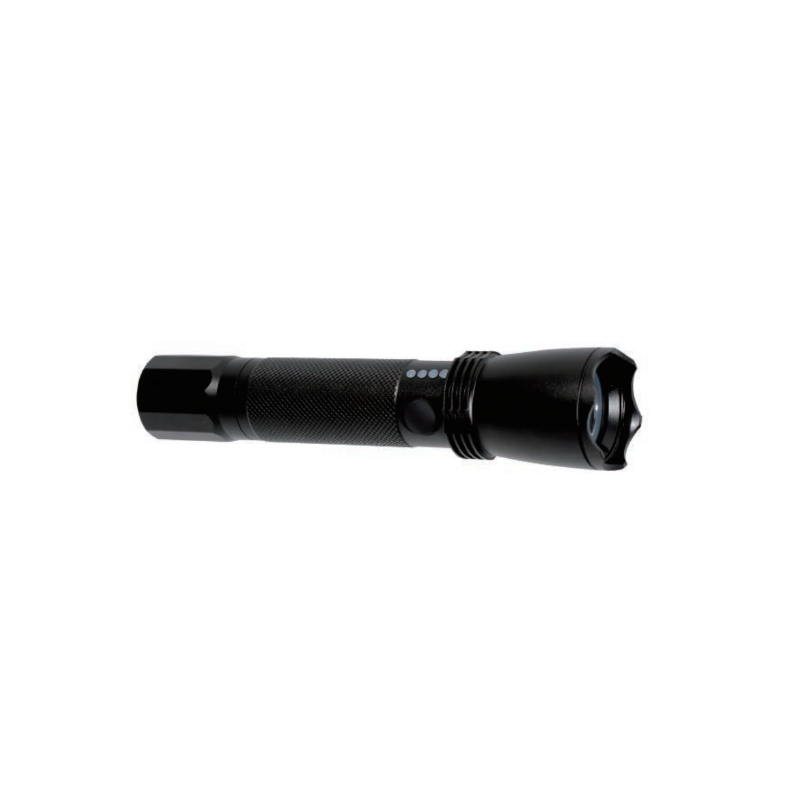LED technology, or light-emitting diode technology, is a technology that uses semiconductor materials to emit light. When an electric current passes through this semiconductor material, it emits light. Compared with traditional lighting technologies, LEDs have many significant advantages, including higher energy efficiency, longer service life, and better environmental adaptability. Because of this, LED technology has been widely used in various fields, not only changing our lighting methods, but also contributing to environmental protection and energy conservation.

1.Home and Commercial Lighting
In home and commercial lighting, LED technology is favored for its energy-saving and long-life properties. LED bulbs and luminaires are now widely used for indoor and outdoor lighting, including home lighting, office lighting, and lighting in public places such as parks and street lights. The energy-saving performance of LED lighting fixtures has a significant impact on reducing electricity consumption and lowering energy costs for homes and businesses.
2.Automotive lighting
In the automotive industry, LED technology is used in headlights, taillights, turn signals and interior lighting. LED fixtures not only provide better light quality, but also reduce maintenance costs and energy consumption due to their durability and low energy consumption characteristics.
3.Signals and displays
LED technology is also widely used in signal lights and display screens. From traffic lights to billboards and large displays, LEDs offer greater visibility, lower energy consumption and longer life. Especially in outdoor advertising and public information displays, LED displays have become the technology of choice due to their excellent brightness and color expression.
4.Medical and Health
In the healthcare field, LED technology is used in a variety of medical lighting equipment, including operating room lights, examination lights, and special LED lights for photodynamic therapy and skin treatments. The energy efficiency and accurate spectral output of LED lights are of great significance for improving diagnostic accuracy and treatment effectiveness.
5.agricultural lighting
LED technology is increasingly used in agricultural production, especially in grow lights. LED grow lights can provide specific light spectrum suitable for different plant growth stages, thereby optimizing crop production and increasing yield while reducing energy consumption.
The importance of LED technology in marine lighting
The application of LED technology in marine lighting not only reflects its broad applicability, but also highlights its unique importance in this special environment. The marine environment presents a range of challenges, including high salinity, humidity and temperature fluctuations, conditions that require lighting equipment to be extremely corrosion-resistant and stable. LED technology plays a key role in the field of marine lighting precisely because of its excellent performance and adaptability.
- Improve security
At sea, safety is one of the most important considerations, both for vessels sailing and those working on docks. The high-quality light provided by LED lighting can ensure the visibility of ships during night navigation or bad weather conditions, significantly improving maritime safety. At the same time, the long life and reliability of LED lights used to mark channels, buoys and lighthouses reduce maintenance needs and ensure continued safe navigation. - Energy saving and environmental protection
LED luminaires are widely used in marine lighting due to their high energy efficiency, which allows them to significantly reduce energy consumption compared to traditional lighting technologies. This is particularly important for ships, as energy savings are directly linked to reduced operating costs. In addition, the application of LED technology also supports ocean conservation efforts because it reduces light pollution and helps protect the natural ecology of marine life. - Improve work efficiency
In fields such as ocean exploration, fishery, and undersea operations, LED lighting has greatly improved operational efficiency and effectiveness with its high brightness and ability to customize spectrum. Especially in night operations or deep-sea environments, the light provided by LED lighting can penetrate seawater and improve vision, making operations safer and more effective. - Adaptability and durability
The marine environment places extremely high demands on the durability and reliability of lighting equipment. LED technology, with its solid-state construction and excellent heat dissipation properties, offers high resistance to shock, vibration and extreme temperature conditions. These characteristics allow LED luminaires to exhibit longer service life and lower maintenance requirements than traditional lighting technologies in marine applications.
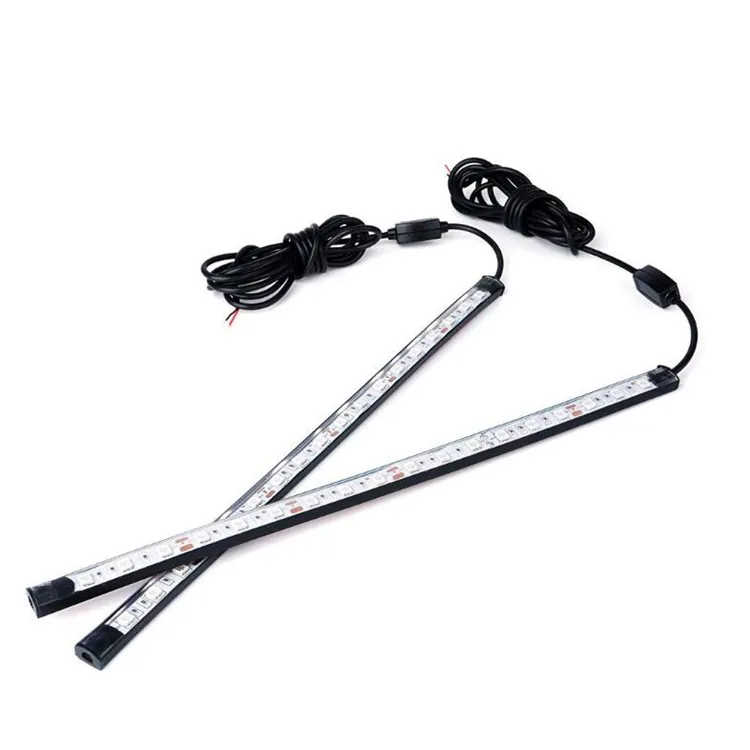
Definition and working principle
definition:
LED (Light Emitting Diode) is an electric light source that uses the properties of semiconductor materials to directly convert electrical energy into light energy when current passes through it. It works based on the principle of emitting light when electrons and holes recombine in semiconductor materials.
working principle:
The core component of LED is a PN junction composed of P-type semiconductor and N-type semiconductor. When a voltage of appropriate polarity is applied to both ends of the PN junction, the electrons in the N-type semiconductor will cross the PN junction and combine with the holes in the P-type semiconductor. In this process, the electrons transition from a high energy level to a low energy level, releasing energy. Emitted in the form of light. The color of light depends on the width of the semiconductor material’s band gap, which is the amount of energy released when electrons transition.
Comparison between LED and traditional lighting technology
| Feature | LED | Traditional Lighting (e.g., Incandescent, Fluorescent) |
|---|---|---|
| Efficiency | High efficiency, most electrical energy is converted to light, with minimal heat production. | Low efficiency, a large amount of electrical energy is converted to heat, with only a small portion converted to light. |
| Lifespan | Long lifespan, typically ranging from 25,000 to 50,000 hours or more. | Relatively short, with incandescent lamps around 1,000 hours and fluorescent lamps around 8,000 to 10,000 hours. |
| Environmental Friendliness | Does not contain harmful substances, such as mercury, easier to recycle, reducing environmental pollution. | May contain harmful substances like mercury, improper handling can cause environmental harm. |
| Cost | Higher initial cost, but due to its long lifespan and low energy consumption, the total cost of ownership (including operational and replacement costs) is lower. | Lower initial cost, but higher energy consumption and frequent replacements lead to higher long-term costs. |
| Application Flexibility | Small size, can be designed in various shapes and sizes, suitable for innovative and customized applications. | Shape and size are limited, application range is more fixed. |
| Light Quality | Offers a variety of color and temperature options, uniform light, dimmable, suitable for different environments and needs. | Limited color temperature and color choices, some types (like incandescent) offer soft light, while fluorescent lights may flicker, unfriendly to the eyes. |

Application of LED technology in marine lighting
The applications of LED technology in marine lighting are manifold, reflecting the flexibility and efficiency of this technology. With the advancement of technology and further reduction of costs, it is expected that the use of LEDs in marine applications will become more extensive and in-depth.
The following is an overview of several key application areas of LED technology in marine environments:
- Ship lighting
LED lights are widely used in internal and external lighting of ships, including deck lighting, cabin lighting, navigation lights and signal lights. The high energy efficiency and long life of LED lights make them ideal for long-term use at sea. In addition, the seismic performance of LEDs also shows superiority when withstanding the impact of waves. - Underwater lighting
LED technology has improved the quality and efficiency of underwater lighting and is widely used in submarine lighting, underwater photography, and fishing lights. LED underwater lights have good penetration and can provide clear vision in turbid seawater, and their low energy consumption characteristics are particularly important for battery-powered applications. - Port and terminal lighting
The application of LED lighting in ports and terminals improves the safety and efficiency of these areas. The reliable performance and long life of LED luminaires reduce maintenance requirements, while their high light efficiency ensures safety during nighttime operations. - Offshore platform lighting
On offshore platforms such as oil drilling platforms and offshore wind farms, LED lighting provides an efficient and reliable light source. These environments require lighting equipment to withstand harsh weather conditions and salt spray corrosion, and the durability of LED luminaires is critical in these applications. - Marine life research and breeding
LED lights play an important role in marine life research and breeding, especially in applications that simulate natural light conditions to promote the growth of marine life. LED lamps can provide different wavelengths of light, suitable for different types of marine life, thereby optimizing their growth environment. - Search and rescue
During search and rescue operations, LED lighting provides valuable assistance with its high brightness and long-distance visibility. Whether it is maritime search and rescue or night navigation, LED technology can provide powerful lighting support.
Advantages of LED technology in marine lighting
The application of LED technology in marine lighting demonstrates a variety of advantages, making it the first choice to replace traditional lighting solutions. The advantages of LED technology in marine lighting are clear and obvious. It not only improves energy efficiency and reliability, but also reduces long-term operation and maintenance costs while having a smaller impact on the environment.
These advantages include:
- High energy efficiency
LED fixtures convert most of their energy into light rather than heat, which means they consume less electricity to provide the same level of brightness. This feature is particularly important in marine applications, where energy supplies may be limited on ships or offshore installations, and energy-efficient lighting systems can significantly reduce operating costs. - Long life
The service life of LED lamps far exceeds that of traditional lamps, usually reaching 25,000 to 50,000 hours, and some even longer. This reduces replacement frequency and associated maintenance costs, and is particularly important for difficult-to-access marine lighting locations. - Durability and reliability
LED lighting technology is highly resistant to vibration and shock, making them ideal for use in marine environments that are often exposed to harsh weather and waves. LED lamps can also operate normally within a wide temperature range, ensuring the continuity and reliability of offshore applications. - Low maintenance requirements
Due to the long life and high reliability of LED fixtures, their maintenance requirements are much lower than traditional lighting systems. This is particularly important for marine applications, as maintenance work in these environments is difficult and expensive. - Instant lighting and dimming capabilities
LED lamps can instantly light up to their maximum brightness without any need for warm-up time, and most LED lighting solutions support dimming functions. This provides additional flexibility and control over marine lighting to adapt to different environmental needs and conditions. - Environmentally friendly
LED lighting does not contain harmful substances, such as mercury, and is more environmentally friendly than traditional lighting technology. In addition, their high energy efficiency and long life also mean a smaller impact on the environment over their lifetime. - Improve visual quality
The light provided by LED lamps is closer to natural light, helping to improve visual clarity and color recognition. This is important in marine applications that require precision operations, such as navigation, fishing or diving activities.
Challenges and considerations
Although LED technology brings significant advantages in marine lighting, its application still faces some challenges and considerations. These challenges not only involve the characteristics of the technology itself, but also include environmental adaptability, economics and operational issues.
- Initial investment cost
Although LED lighting systems have lower operating costs, their initial installation costs are typically higher than traditional lighting systems. For large-scale marine projects, high upfront investment can be an important consideration. - Technical adaptability and compatibility
The marine environment is complex and changeable, requiring lighting systems to be highly adaptable. LED technology must be able to withstand conditions such as extreme temperatures, high salt corrosion and severe vibration. Additionally, integrating LED lighting systems into existing marine facilities may require additional technical adjustments and compatibility considerations. - Light pollution and ecological impact
Although LED lighting is considered environmentally friendly, in some cases they may produce light pollution that affects the natural behavior and ecological balance of marine life. It is necessary to study the potential impact of LED light sources on marine ecology, especially on nocturnal activities and migration behavior. - Corrosion resistance and waterproof performance
The high salt content and humidity of the marine environment require lighting equipment to have excellent corrosion resistance and waterproof properties. These factors must be taken into consideration when designing and selecting LED lighting products for marine applications to ensure long-term reliability and performance. - Difficulty of maintenance and replacement
Although LED luminaires have lower maintenance requirements, maintenance and replacement can still be a challenge in certain marine environments, such as offshore platforms or difficult-to-access areas of ships. Therefore, it is particularly important to choose LED products with long life and high reliability. - Thermal management
Although LED fixtures are more efficient than traditional lighting technology, they still generate heat. In enclosed or confined marine environments, a good thermal management system is necessary to prevent overheating from affecting LED performance and life. - Regulations and Standards
Marine lighting projects may be subject to specific regulations and standards, including safety, environmental and technical standards. Understanding and adhering to these regulations is critical to ensuring project compliance and success.

Conclusion
The application of LED technology in marine lighting demonstrates its great potential as an efficient, reliable and environmentally friendly lighting solution. Through its remarkable energy efficiency, long life, high durability and excellent environmental adaptability, LED technology can not only meet the strict requirements for lighting in the marine environment, but also reduce energy consumption and maintenance costs while mitigating the impact on the marine ecology. Influence. However, although LED technology brings many advantages, its application in marine lighting also faces a series of challenges, including higher initial investment costs, technology adaptability and compatibility issues, and potential issues with light pollution and ecological impact.
In order to maximize the application potential of LED technology in marine lighting, it is important to consider these challenges comprehensively and adopt appropriate strategies to solve them. This includes investing in research and development to improve the performance and durability of LED products, designing lighting solutions more suitable for marine environments, and conducting more research on the impact of LED light sources on marine ecology. At the same time, through optimized design and planning, the economy of the LED lighting system can be further improved, its impact on the environment can be reduced, and its success and sustainable development in marine applications can be ensured.


